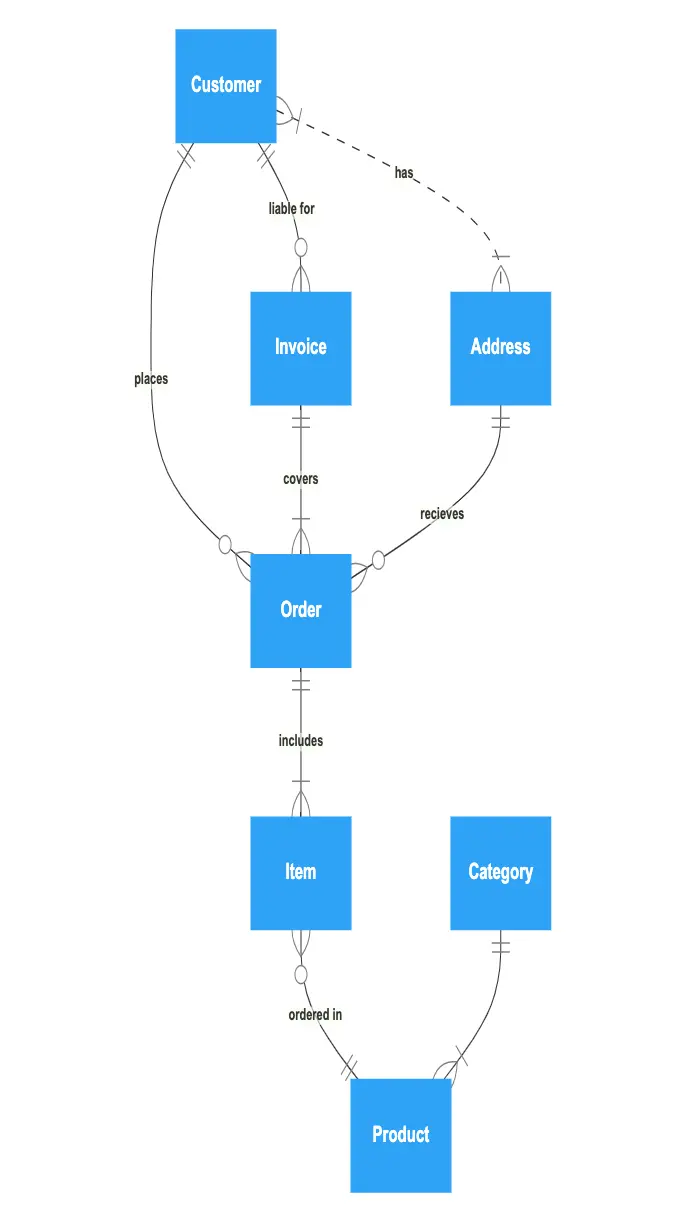This ER diagram shows a simple order process. A customer places zero or many orders. The customer must pay for the order, so the system issues an invoice. This invoice covers one or many orders. The customer receives the order at the provided address. The order includes one or many items. Those items are each associated with real-world products, while one or many products under one category.

Edit this diagram in Gleek
Simple order process diagram code in Gleek
Customer {1}- places-{0..n} Order
Customer {1}-liable for -{0..n} Invoice {1}-covers-{1..n} Order
Customer {1..n}-. has .-{1..n} Address {1}-recieves-{0..n} Order
Order {1}-includes-{1..n} Item {0..n}-ordered in-{1} Product
Category {1}–{1..n}Product
About ER diagrams
We often make an entity-relationship (ER) diagram, ERD, or entity-relationship model, in the early stages of designing a database. An ERD is perfect for quickly sketching out the elements needed in the system. The ERD explains how the elements interact. ER diagrams can be shared with colleagues. Their simplicity makes them ideal even for non-technical stakeholders.
Similar ER diagram examples
Online store entity-relationship diagram
Banking system entity-relationship diagram
Travel management system Er diagram
College management system ER diagram
Bus reservation system ER diagram
Student management system entity-relationship diagram